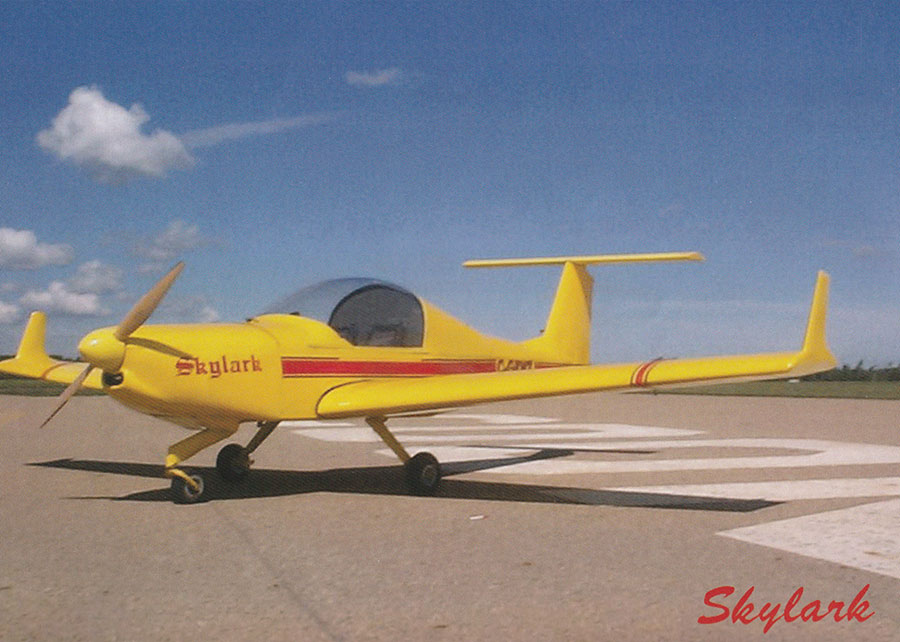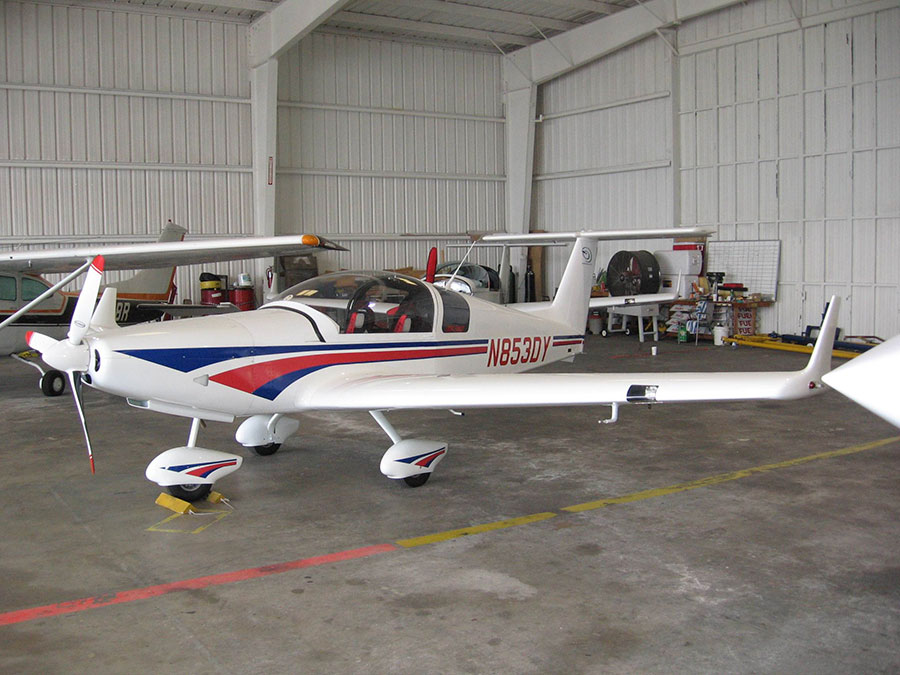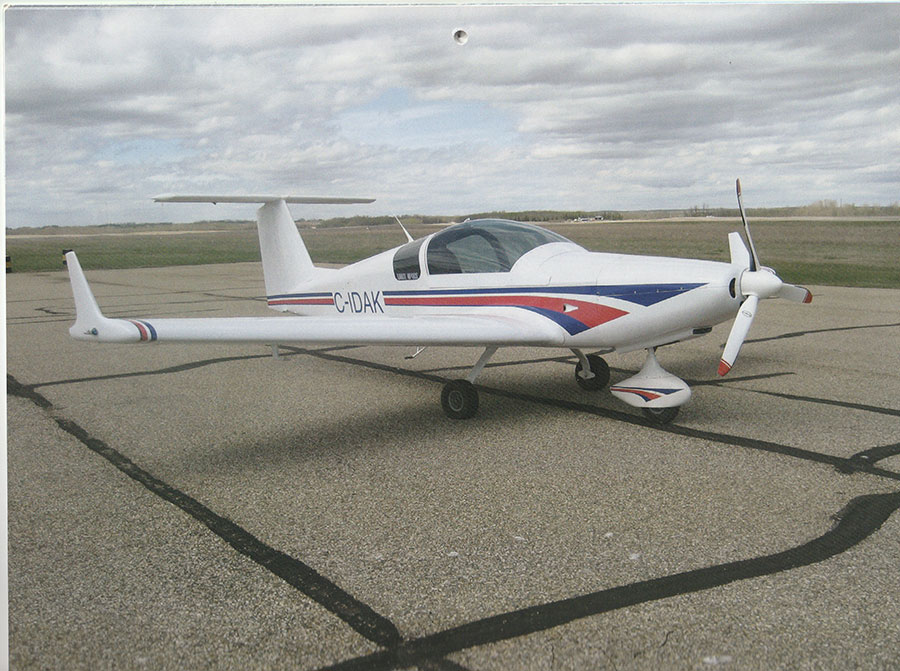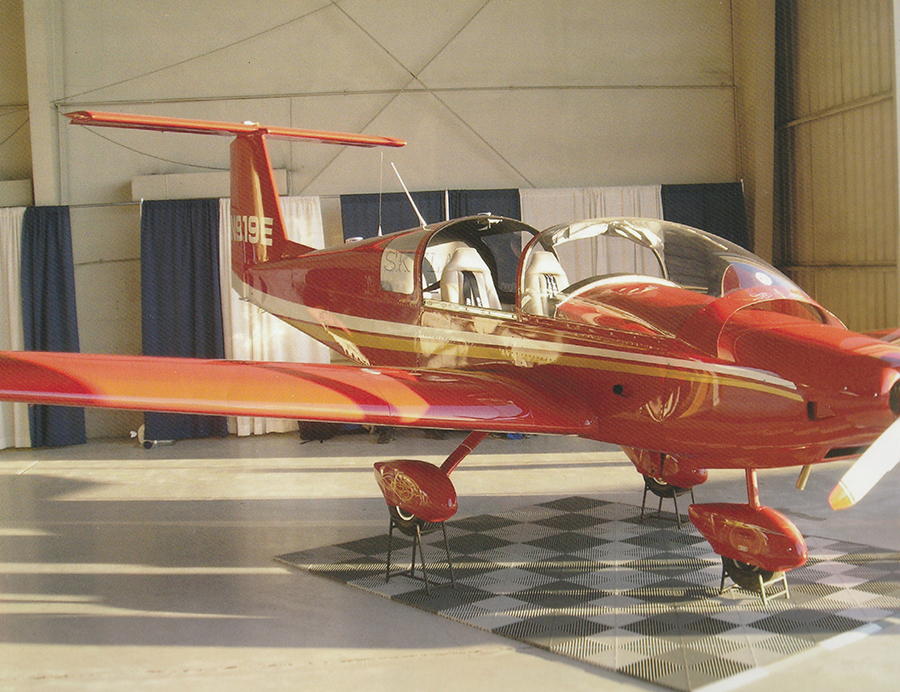Skylark light sport aircraft About the airplane
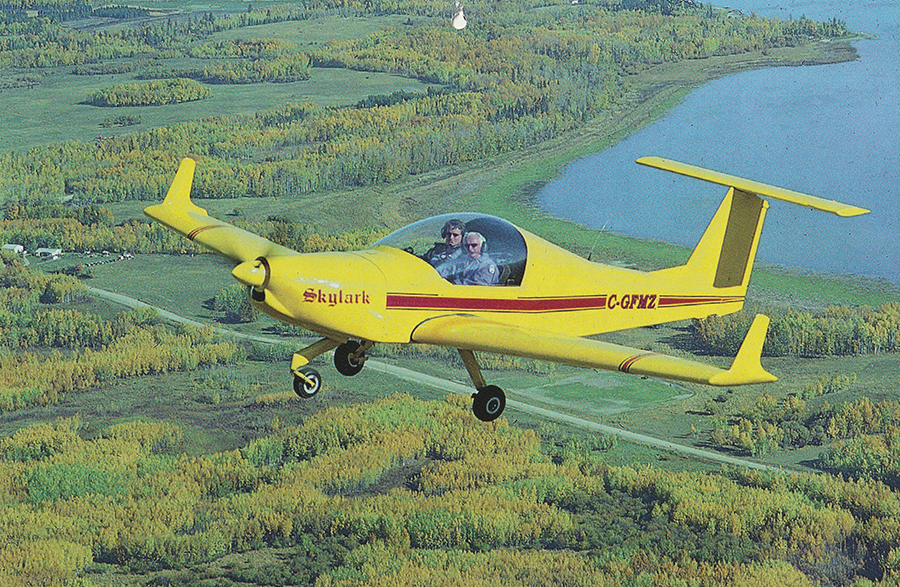
Background on the Skylark Aircraft
Aircraft design is a blend of art and science, with the art depending on the experience and ingenuity of the designer.
The design Engineer
Dr. David Marsden, B.Sc., D. C. Ae., Ph. D., P Eng. Fellow of the Canadian Aeronautics and Space Institute Professor Emeritus, Engineering, University of Alberta
Dr. Marsden has 40 years experience in aerodynamic research, and design of sailplanes and light aircraft. The Skylark is the latest in a series of light aircraft designs and builds on the experience of earlier designs, as well as flying experience ranging from military aircraft in the 1950’s to high performance sailplanes and flight testing his light aircraft designs.
He was elected a Fellow of the Canadian Aeronautics and Space institute in recognition of his contributions to Aeronautical Science, and was awarded the Paul Tissandier Diploma by the FAI for his contributions to Gliding in Canada and soaring flight records. He is the current distance record holder for soaring flights in Canada. (1100 km)
